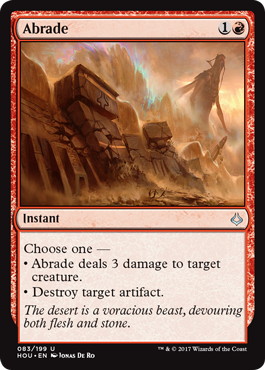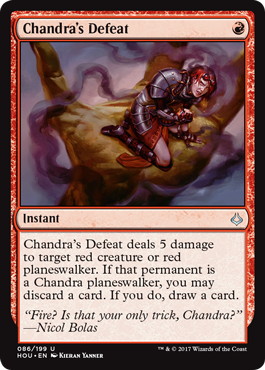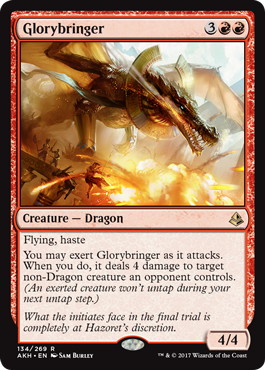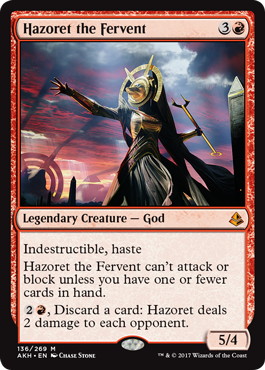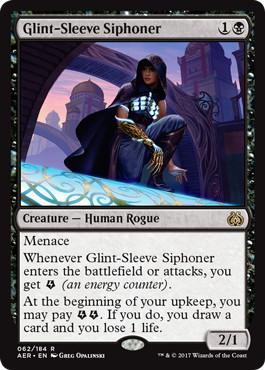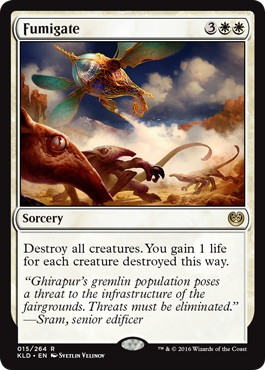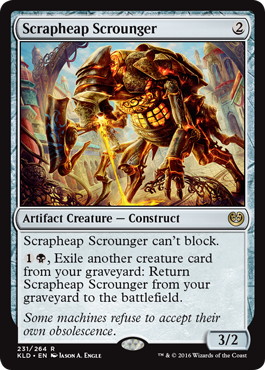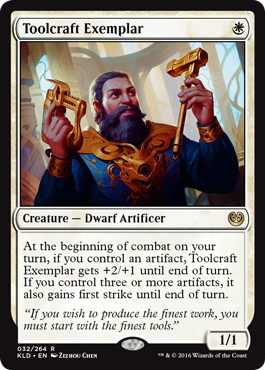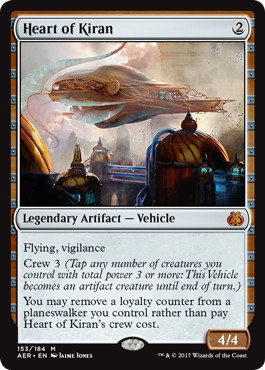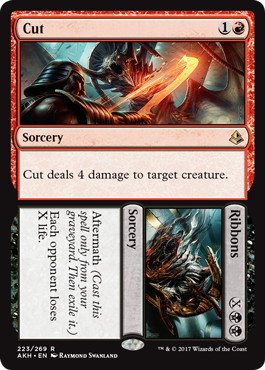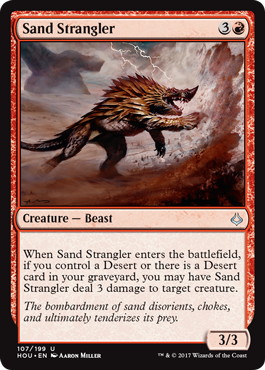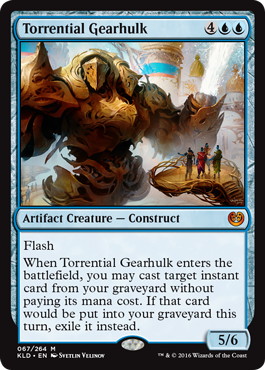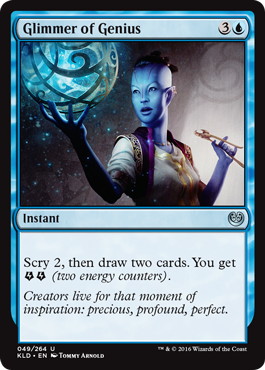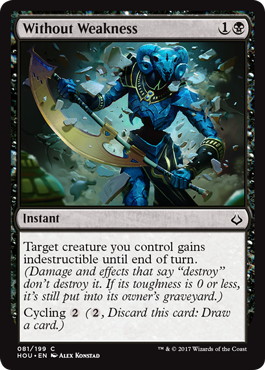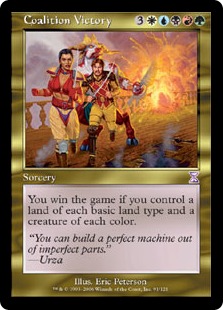Last weekend I got third with team Germany at the 2017 World Magic Cup (WMC).
Only managed to get third place at #MTGWMC but at least this way I have room to improve next year!
— Marc Tobiasch (@MarcTobiasch) 2017年12月3日
It was an interesting event for multiple reasons. First of course there is the national pride, the camaraderie and such but that isn’t going to help you. More interesting for you probably is the concept of team unified constructed and teamplay in general.
Next year leading into the 25th anniversary Pro Tour will give us a larger then usual number of team events at the Grand Prix level as well as the RPTQ level. Team events are both fun and challenging. Its nice to be able to compete with your friends or compatriots, winning together and taking a loss less harshly. There are a number of things to consider going into a team event though.
Difficulty of Unified Format
First, the format. For the WMC this was unified standard, a format that will also be the format of choice for the RPTQ leading up to the team Pro Tour next year for example.
For any unified format there are a number of restrictions that will heavily impact the metagame. Unified means, that any card that is not a basic land is only allowed to be played in one of the three decks.
What deck is suitable alongside with Mono Red
For standard that meant that the two decks that are currently being viewed as the best in the metagame, Temur Energy and Mono Red, cannot coincide since there is a strong overlap with 《Abrade》, 《Chandra, Torch of Defiance》, 《Chandra's Defeat》 and 《Glorybringer》.
My thought process, which was shared by the majority of the field was that the optimal combination would include Mono Red as a deck since 《Hazoret the Fervent》 is one of the best cards, with mono red being the strongest shell for it.
That leaves Temur as a non-option but leaves the possiblity of another energy deck; either Sultai building of Seth Manfield’s Pro Tour winning decklist or some kind of four color variant.
The problem with this approach is 《Approach of the Second Sun》, or rather the third deck. With most of the good cards in the format being cannibalistic in a way that makes splitting them up hard, the third deck naturally becomes a weak choice. Most people went to one of the blue white decks that see fringe play in the metagame. U/W Gift, 《Approach》 or Cycling. Those decks usually have a decent game one against the energy decks, and can maybe win one of the next two to clinch the match.
However the mono red matchup started abysmal preboard and didn’t improve enough to reliably take the match. The derth of removal in standard was one of the main restrictions in unified, invalidating many of my more “off the wall” ideas since 《Fatal Push》 is necessary to combat the red menace. The third deck was, for that reason, usually a 《Fumigate》 deck and Mardu enabled this game plan post sideboard against the energy decks where it is strongest.
Most teams decided to brace the wind and take their losses when facing the wrong matchup and play some U/W variant anyway. I figured instead, that the best way was to actually play another strong aggressive strategy, namely Mardu.
Mardu was a deck many did not consider since the gernerally approved list was incompatible with mono red. The strong Mardu cards like 《Scrapheap Scrounger》, 《Toolcraft Exemplar》 and 《Heart of Kiran》 stand well on their own, however, and with some tweaking it was possible to find a combination of the two that was strong. Also Mardu was a very stong choice against the opposing “third deck”.
I prioritize having a good manabase which is tough in Mardu since the mana requirements are intense with turn one white for 《Toolcraft Exemplar》, turn two red and white for 《Veteran Motorist》 black for 《Scrounger》, 《Unlicensed Disintegration》 and 《Push》 and possibly both double white and double red cards.
I decided to make the black requirements as shallow as possible, with only 《Scrounger》 and 《Disintegration》 in the main deck requiring black and only 《Duress》 in the sideboard which in this deck is typically a turn 4 play to take something like 《Settle the Wreckage》, 《Fumigate》 or 《Refurbish》. Without access to 《Push》 or 《Abrade》 (since the red deck really needed that) I dicided to play some 《Cut // Ribbons》 which played well with the playstyle.
To better support the 《Fumigate》 gameplan postboard I decided on playing more planeswalkers, including three 《Gideon of the Trials》, which played a strong role against other aggressive decks since it can play double duty with defence and offensive especially with 《Heart of Kiran》.
The other planeswalker is 《Chandra, Torch of Defiance》. This one was the hardest aspect of building the deck, since 《Chandra》 is also a very important sideboard card for the mono red deck. The reason to play it in Mardu instead is twofold.
For one the deck needed another planeswalker badly to keep 《Heart of Kiran》 strong in postboard games against energy that included 《Fumigate》 especially. The other side is the way I built the mono red list. Since mono red was likely the most popular deck of the tournament it made sense to slant the list for a strong mirror match.
One of the best cards in the mirror was 《Sand Strangler》 and that could play the role of 《Chandra》 against something like Sultai where that card was very important. So we played the full playset of 《Sand Strangler》 and the full playset of 《Glorybringer》 in the 75 of mono red where otherwise those cards would only have been 2-3 offs.
The logic was, that the replacement of 《Chandra》 in the role we needed her most with either another 《Glorybringer》 or another 《Sand Strangler》 was a smaller downgrade then it would be for Mardu.
Our Decklists
The energy variant I chose was four color control, which was a strong choice against both the U/W deck I was expecting in droves as well as opposing energy decks. This left us playing three red decks, but I guess that just shows how strong that color is right now in standard.
Here are the lists we ended up running at the WMC, and for reference the other more configurations that brought their teams into the top 8:
- Phillip Krieger
- 「Mardu Vehicle」
- 2017 World Magic Cup
- (Seat A)
4 《Mountain》
3 《Canyon Slough》
4 《Inspiring Vantage》
4 《Concealed Courtyard》
4 《Spire of Industry》
-Land (25)- 4 《Toolcraft Exemplar》
4 《Walking Ballista》
4 《Veteran Motorist》
4 《Scrapheap Scrounger》
2 《Depala, Pilot Exemplar》
-Creature (18)-
4 《Unlicensed Disintegration》
4 《Heart of Kiran》
2 《Aethersphere Harvester》
3 《Gideon of the Trials》
2 《Chandra, Torch of Defiance》
-Spell (17)-
3 《Fumigate》
2 《Magma Spray》
2 《Ixalan's Binding》
1 《Cut // Ribbons》
1 《Aethersphere Harvester》
1 《Skysovereign, Consul Flagship》
1 《Chandra, Torch of Defiance》
-Sideboard (15)-
- Marc Tobiasch
- 「4C Energy Control」
- 2017 World Magic Cup
- (Seat B)
1 《Forest》
1 《Swamp》
1 《Mountain》
2 《Fetid Pools》
4 《Botanical Sanctum》
4 《Blooming Marsh》
2 《Dragonskull Summit》
1 《Drowned Catacomb》
4 《Aether Hub》
-Land (22)- 4 《Glint-Sleeve Siphoner》
4 《Rogue Refiner》
3 《Whirler Virtuoso》
1 《Gonti, Lord of Luxury》
2 《The Scarab God》
3 《Torrential Gearhulk》
-Creature (17)-
4 《Fatal Push》
3 《Essence Scatter》
3 《Harnessed Lightning》
2 《Supreme Will》
3 《Vraska's Contempt》
2 《Glimmer of Genius》
-Spell (21)-
3 《Deathgorge Scavenger》
2 《Chandra's Defeat》
2 《Appetite for the Unnatural》
1 《Gonti, Lord of Luxury》
1 《Harnessed Lightning》
1 《Supreme Will》
1 《Vraska, Relic Seeker》
-Sideboard (15)-
- Moritz Templin
- 「Ramunap Red」
- 2017 World Magic Cup
- (Seat C)
4 《Ramunap Ruins》
4 《Sunscorched Desert》
1 《Scavenger Grounds》
-Land (24)- 4 《Bomat Courier》
4 《Soul-Scar Mage》
4 《Earthshaker Khenra》
3 《Kari Zev, Skyship Raider》
4 《Rampaging Ferocidon》
1 《Ahn-Crop Crasher》
4 《Hazoret the Fervent》
1 《Sand Strangler》
-Creature (25)-
4 《Glorybringer》
3 《Sand Strangler》
2 《Scavenger Grounds》
1 《Ahn-Crop Crasher》
1 《Abrade》
-Sideboard (15)-
This approach of predicting the metagame and trying to find weak points and exploiting them is a very valid strategy in small unified formats since usually the options boil down to only a few. For me and my team it paid off even though we did lose in the semifinals to a strong Polish team.
The Team Aspect
The second challenge is the team aspect. Usually Magic is played as a match between two people and it is difficult to get used to the idea of talking to other people during a match. However this option is a huge resource that you should use to the best of your ability to give you the best possible edge.
For this to work you have to figure out your own strengths and weaknesses beforehand as well as those of your teammates. Some people are very good at playing multiple games at once and giving advice while others will crumble and play worse in all of them.
You have to be honest with yourself and your team with this, since if you try to tackle more then you will perform worse as a whole. If you have someone who best plays his game alone this is fine, but then he should sit at the side so the other two can contribute to each others game if possible. Combining the mental resources of multiple players can be a huge asset. It is advisable however that, especially if you have a similar skill level, you try this out beforehand in testing.
What I have witnessed at the WMC as well as other team events is the detrimental effect of recourse pooling. This happens mostly when there is only one match going on for the decider and all three teammates, who are unused to exchanging ideas during a match will try and find the best line together.
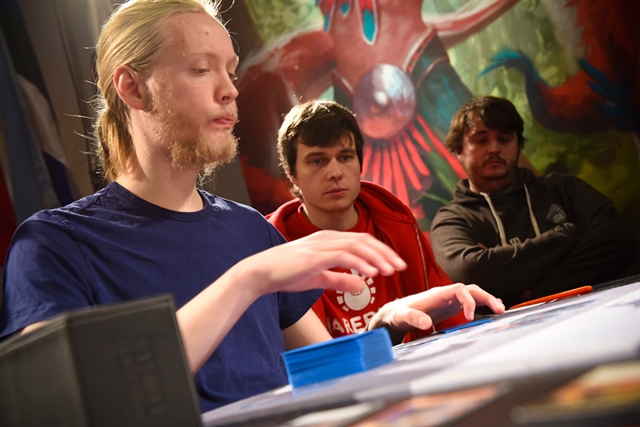
Image Copyright: Wizards of the Coast
A lot of the time the players will have different opinions and debate each choice. For one, this can take a lot of time and in a tournament setting that can easily earn you a slow play warning. For another, the reason why we call decision trees “lines” is that one depends on the previous one. If you have multiple people “cooks cooking” if you will, you inevitably end up playing in a way that invalidates all of your decisions.
Take both wins and losses as a Team
Another very important aspect of teamplay that I see going wrong a lot is blame. No one likes losing and its worse when you lose after actually winning your match. It’s easy to then blame your teammates for the loss and you will sometimes hear things like “I won, but my team lost” or “I am 7-1, but my team is 4-4” or something of the like. This is the worst possible approach for multiple reasons.
For one you decided to play with your team, decided together on the decks and you could have even helped them out in tough spots so each loss is on you as much as it is on them even if they held the cards. Also, and this comes up in limited a lot but we even talked earlier about the weak “third deck” in unified standard, the decks will not all have the same strength usually. Or you can face bad matchups.
Maybe you just got lucky with your matchup while your teammates got the rough draw. Lastly the aspect of morale and what magicplayers like to call tilt is a crucial one for weathering long tournaments.
Having your team to fall back on, having a fun atmosphere and taking both your losses and your wins as a team is incredibly important for performing well over the long run.
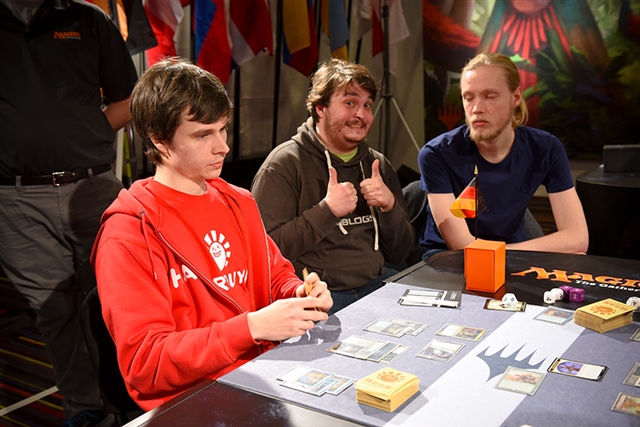
Image Copyright: Wizards of the Coast
Basically practice makes perfect and the way teamplay works is something you rarely train in your usual magic tournaments, so taking some time beforehand to familiarize yourself with it; is usually well worth it.
Thank you for reading,
Marc.
Recommended Items
German powerhouse who continues to be active in Europe’s premier event and attracts attention. He is also famous as a deck builder. His construction was taken up by official coverage.
In the Pro Tour: Amonkhet, he was undefeated in the draft round, and he won the Top 8 awards with its momentum.




